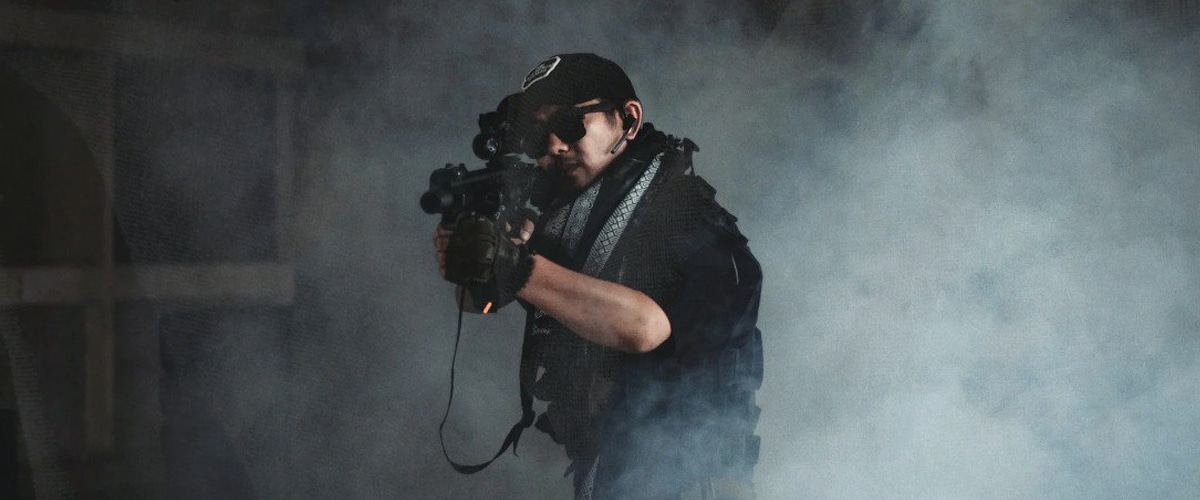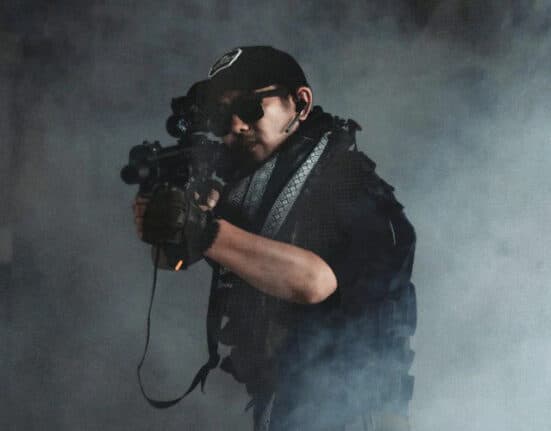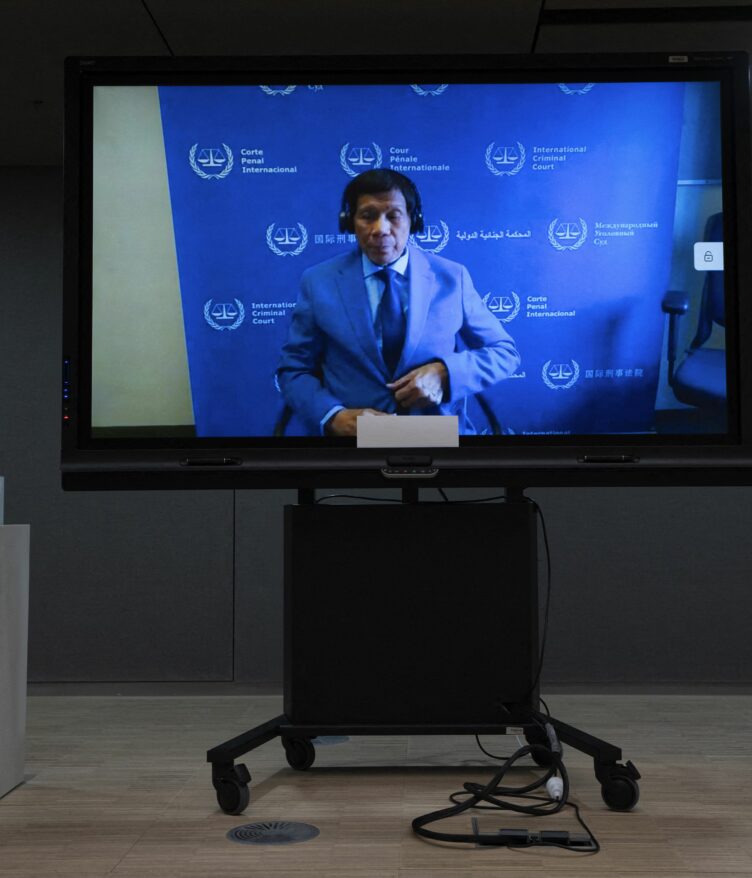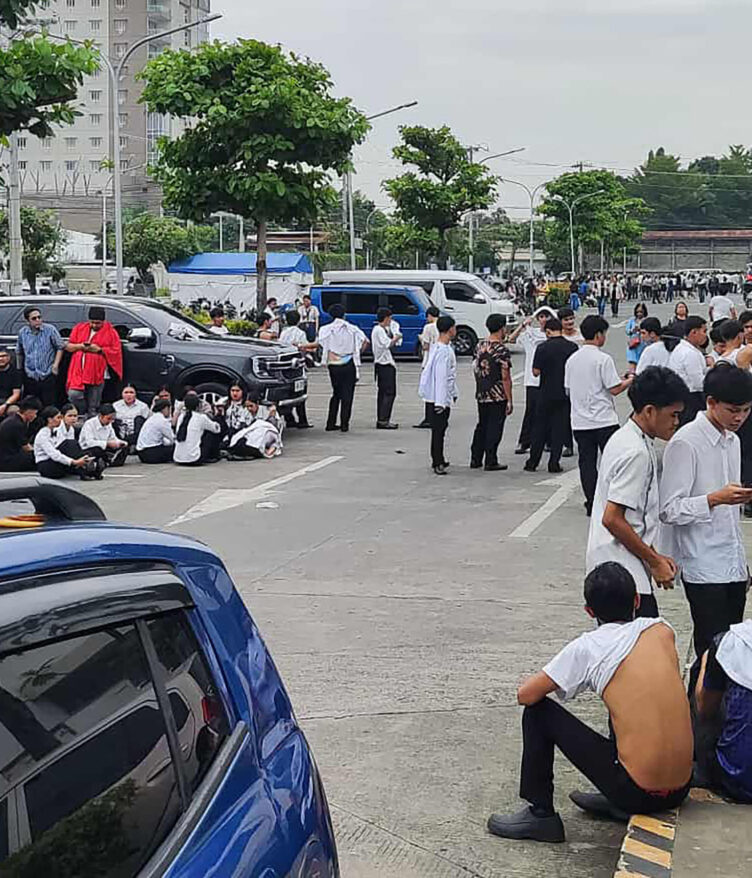IT is now a running joke that the next milestone to a has-been action star’s career is to be a politician.
It certainly didn’t help that four out of the nineteen current senators in the country were big names in the guns-and-violence genre during their heyday.
They usually play the same character, just dressed up with a different flavor: the untouchable, leather jacket-wearing, and (most probably) bulletproof protagonist, the hero of the poor and the weak who makes ladies half their age swoon for their charm.
Some people are critical of these individuals, attributing their wins more on their ability to bank on their popularity rather than their talent of public service. But if that’s the case, then surely we’d see more drama actresses, rom-com matinees, and horror-screamers in high-ranking government positions.
Although they do exist (think Vilma Santos), they are not as prevalent in the higher positions as their counterparts. In fact, the only actor to have achieved the honor of being the national president was Joseph Estrada, a former action star.
But why is that? What makes these action stars stand out for the masses? Is it their credibility? Their intellect? Their utmost sincerity to serve the public?
Or has it more to do with a Filipino cultural phenomenon? One that concerns the action genre’s most distinctive quality: the guns, the cigarette, the violence— all in a man’s hand?
Maybe this is about the Filipino’s perception of hegemonic masculinity.
Hegemonic Masculinity

What comes into mind when you hear the word masculine? | Photo Courtesy: Pexels
The screen is grainy. A cigarette dangles from the hero’s lips. The barangay is in chaos, the corrupt mayor is laughing somewhere in his mansion, and a woman is crying over her dead brother’s body.
Enter our protagonist— silent, angry, and bringing his own justice to the scene. He doesn’t need a backup. He doesn’t need the law. All he needs is his ‘paninindigan’— and maybe a leather jacket and .45 caliber handgun.
Yet this isn’t just entertainment— no. This is what we’ve been conditioned to view as what the “real man” looks like.
One could make a case that at the heart of every action film starring a man lies the idea of hegemonic masculinity.
Hegemonic masculinity is a term coined by Australian feminist sociologist R.W. Connell in the 1980s. It refers to the dominant model of manhood that the society holds up as ideal.
This means that hegemonic masculinity is viewed as the type of masculinity on the top of hierarchy. It is relational and often constructed in opposition to femininity which it regards as subordinate or inferior.
For example, in many Western societies, the hegemonic masculine ideal often includes being white, heterosexual, upper- to middle-class, assertive, physically dominant, and emotionally detached.
A contemporary figure who embodies and promotes this stereotype is Andrew Tate, who frequently positions himself as an “alpha male.” However, this portrayal has faced widespread criticism and parody online, especially as public awareness of hegemonic masculinity and its harmful effects continues to grow.
But just as it is a product of its environment, hegemonic masculinity is also historically and culturally specific. For instance, during times of war, the ideal man was often the fearless, physically tough soldier—think of figures like General George S. Patton or Douglas MacArthur.
However, in the rise of post-war capitalist economies in the West, the ideal shifted toward the powerful, self-made businessman, exemplified by figures like Gordon Gekko (from pop culture) or real-life moguls like Donald Trump in the 1980s, who symbolized wealth, dominance, and control in a corporate setting.
The Face of Masculinity in the Philippines
In the Philippines, the phenomenon of hegemonic masculinity is also clearly observable, but it finds its most amplified expression through popular culture.
Among the various cultural media, action films stand out as the loudest and most persistent proponents of this ideal.
In his study entitled, “Representation of Masculinity in FPJ’s Action Films”, University of the Philippines Diliman Professor Rommel B. Rodriguez analyzed how masculinity is represented in several selected films of Fernando Poe Jr. or more colloquially known as FPJ.
FPJ, regarded as the “King of the Philippine Movies,” became famous for his roles in action films that featured stereotypical heroic characters—tough, righteous, and dedicated to fighting for justice and defending the underprivileged.
In his studies of FPJ films, Professor Rodriguez observed that masculinity in these movies is often linked to fatherhood.
His father-character is a doting one who does his best to give his family a decent life despite his meager salary. He leads a simple life. The embrace and kiss of his wife and the warmth of his children are all that it takes for an ideal life. Though lacking in material things, the love of his family is more than enough for him to live peacefully and honorably. His enervation quickly dissipates in the presence of his children who are innocent to the dangers of his work.
R.B. Rodriguez, Representation of Masculinity in FPJ’s Action Films
Moreover, the fatherhood depicted in FPJ films is not merely biological, but also symbolic. As Professor Rodriguez observed in one of his films, FPJ’s role as a father extends beyond his own daughter to other characters who are not biologically related to him, highlighting a broader, almost communal sense of paternal authority and protection.
This was exemplified in Kahit Butas ng Karayum, Papasukin Ko:
Daniel’s status as a father does not stop at his being a dad to his daughter. He needs to extend his masculinity. This is fulfilled when he acts like a father to the soldiers he joins in Mindanao… Daniel’s lack of a son to complete his fatherly image, in order to also fulfill his being a model, is filled by the soldiers who submit themselves to his influence and leadership. Daniel becomes their disciplinarian. It does not take long before Daniel proves his mettle as a disciplinarian and upright soldier, and the soldiers who formerly abused their power and position gradually change their ways. The erstwhile gun-toting terrors are soon loved and admired by the community’s civilians.
R.B. Rodriguez, Representation of Masculinity in FPJ’s Action Films
But the fatherhood presented by the ideal masculinity in the Philippines, though powerful, is not necessarily wise or emotionally competent. Traditionally, we expect fathers to be responsible, mature, and to know better than their children—especially their daughters.
Yet in the study, Professor Rodriguez observed that the father figures in FPJ films are infantilized.
Through his calm way of speaking, he comes across as a rational thinker, something that angers the antagonist soldiers. However, when the issue of love is on the table, he is unable to come to a resolution. His status as a father helps raise our expectations that he should possess a wide understanding of the world. His being a good father and head of the family is dissolved, and instead he becomes a child who receives advice from his daughter. He is a father in the familial structure, but upon closer examination, he is the most childlike in the family. Here we note the seeming infantilization of FPJ’s character that is part of the representation of masculinity in action films.
R.B. Rodriguez, Representation of Masculinity in FPJ’s Action Films
This gives us an insight of hegemonic masculinity in works. Filipinos idealize strength as part of masculinity, but it also excuses emotional avoidance and irresponsibility.
Another representation of masculinity on screen, as identified in the same study, is the “Trigger-Happy Vigilante.” In this type of film, the hero often holds a strong presence among the people—whether he is admired or feared, he remains a figure of public attention and influence.
In such movies, the protagonist is— you’ve guessed it— a vigilante who, in his failure to get justice from established institutions, decided to take matters in his own hands. Despite his defiance of the law, he defends the oppressed and exact revenge for the powerless victim.
This is his way of venting his tensions, deficiencies, and his search for the meaning of his existence. The gun seemingly becomes his organ that always reminds him of his manhood and his role in society.
R.B. Rodriguez, Representation of Masculinity in FPJ’s Action Films
The masculine hero in FPJ films was also described by Professor Rodriguez as a “Sadist Hero”. He is violent and he’s creative with his violence:
Aside from using the gun and his skills at fisticuffs, FPJ’s characters have other ways of taking revenge. There are times when he does not allow the villain to talk. Violence is the only path to end the troubles and problems faced by the protagonists in his films. Here, the law of the state is equaled by his own law. In his films, if justice is difficult to attain, this could be achieved with individual actions, using a gun and violence.
R.B. Rodriguez, Representation of Masculinity in FPJ’s Action Films
The audience’s applause for these characters suggests that Filipino masculinity is not just about physical strength but also about the ability to assert dominance, even through violent means. The “sadist hero” in FPJ films typically metes out punishment with little regard for the emotional or moral consequences, reinforcing a version of masculinity that is both hardened and ruthless.
This kind of representation promotes an ideal that values power over compassion, physical dominance over emotional intelligence, and decisive— often brutal action— over thoughtful reflection.
What this reveals about hegemonic masculinity in the Philippines is that it reinforces a rigid, one-dimensional view of what it means to be a man: emotionally restrained, physically strong, and able to resolve conflicts with dominance. It also highlights the societal acceptance—and sometimes even celebration—of men who take justice into their own hands, validating this aggressive masculinity as both powerful and desirable.
The amusing thing about this, however, is that whatever amount of violence and explosion of anger the protagonists exhibit, this is easily accepted by the audience. Even the uncommon and sadistic tendencies of the hero characters are just accepted as common, which seem to create a familiarization to aggression and violence. Violence as an act of aggression and torture against the villains loses its efficacy.
R.B. Rodriguez, Representation of Masculinity in FPJ’s Action Films
The Strongman Ideology
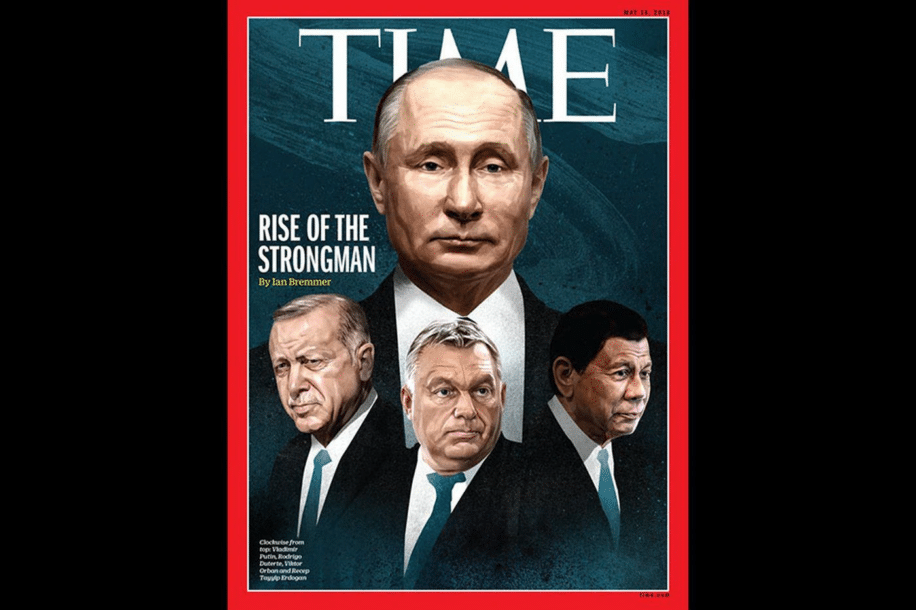
A 2018 cover of TIME Magazine featuring Strongmen Leaders including Vladimir Putin, Viktor Orban, Recep Tayyip Erdogan, and Rodrigo Duterte. | Photo Courtesy: TIME Magazine
So, what’s the harm in all this?
The action hero may have taken down dozens of bad guys, maybe tortured a few just to save on bullets, and even played the clueless dad trying to pass down his version of masculinity.
But hey, he’s just a character, right? He’s stuck on screen, so what’s the big deal?
Well, here’s the catch: the character might stay on screen, but the ideals he represents don’t. They seep into real life. The tough guy persona becomes something we admire, something we imitate.
What starts as fiction ends up shaping our reality.
There’s no shortage of social, cultural, and communication theories that explain how media influences the way we think and behave.
In fact, some go as far as saying that the media doesn’t just reflect reality—it constructs it. What we see over and over in films and shows becomes a blueprint for how we understand the world, how we see others, and even how we choose our leaders.
Enter the strongman.
Action heroes may no longer dominate our screens the way they did in the ’80s and ’90s—but their larger-than-life personas live on in the strongmen who now dominate our ballots. The traits we celebrate in movies— decisiveness, aggression, fearlessness of the law— start to feel like requirements for leadership.
Why elect someone who speaks of policies and collaboration when you can have someone who “gets things done” with a single command?
This is the “strongman” ideology at work. But what exactly is it?
To answer this question, republicasia consulted with Professor Lara Gianina Reyes, an assistant professor and head of the Political Science Division of University of the Philippines Los Baños (UPLB).
“When we say ‘strongman,’ we picture a dominant, formidable leader who rules through fear whether by threats of violence, legal sanctions, or economic control,” said Professor Reyes.
“In politics, a strongman can be a full-fledged dictator or a leader who simply embodies authoritarian tendencies.”
Professor Reyes emphasized that while strongman leaders often display traits typical of dictators—commonly associated with authoritarian or totalitarian regimes—they can still rise to power within democratic systems.
Strongman ideology thrives on the fantasy that complex problems can be solved with brute strength and charisma alone. And because we’ve been trained by the media to admire that kind of character, we begin to crave that kind of leader. Someone who doesn’t hesitate. Someone who talks tough.
Someone who looks like he could star in his own movie.
Strongman ideology and hegemonic masculinity are cut from the same cloth. Both revolve around the performance of dominance, control, and emotional restraint—traits glorified in the archetype of the alpha male or the no-nonsense tough guy.
So when we see hegemonic masculinity play out on screen—and watch it get rewarded—we start to believe in its promise. We see the hero restore order, punish the wicked, and serve justice in ways our own legal system often fails to do. It’s not just entertainment; it becomes an aspiration.
We begin to think. Maybe what we need is a leader who does the same. And just like that, the blueprint for a better government begins to look a lot like the blueprint for a blockbuster action hero. The line between fantasy and leadership blurs—and the strongman steps into the spotlight.
And here’s where it all starts to show up on the ballot.
When we’ve spent years idolizing the action hero—the man who doesn’t follow rules but gets results, who acts first and explains later—it’s no wonder we gravitate toward candidates who feel like they walked straight off a movie set. Maybe they’re actual actors, maybe they’re just real-life performers with the same swagger. Either way, we’ve been primed to see them as the solution.
And the worst part is, these traits we admire in our so-called heroes are almost always coded as inherently male. These are traits that hegemonic masculinity claims as its own.
So when we imagine someone who can “fix the nation” or “restore order,” our minds are often conditioned to picture a man. Not just any man, but a dominant one. A tatay ng bayan figure who leads with force, not feelings.
This makes it harder for anyone who doesn’t fit the mold—especially women, or even men who don’t embody the same tough-guy persona—to be taken seriously as leaders. Their calmness is mistaken for weakness, their empathy seen as indecisiveness.
And suddenly, leadership becomes less about capability and more about performing masculinity.
In our correspondence with Professor Reyes, she highlighted how Philippine politics is gendered, favoring men to hold positions of power.
She cited many studies to prove this, including a research from the United Nations Development Programme (UNDP) Gender Norm Social Index which states that a majority of Filipinos still believe that men make better politicians than women.
In a similar research conducted by Guia and Laoc (2023), it was also found that many Filipinos liked male leaders better when they are “tough talking” and “macho”— qualities often possessed by action leads.
This preference on masculinity doesn’t just marginalize women from holding political positions. It also leads to misogynistic attacks and sexist treatment of them on social media, based on a study by Franco (2022).
“We’re currently caught in a cultural crossroads,” said Professor Reyes. “On one hand, traditional Filipino values emphasize family structures led by strong patriarchs, reinforcing domestic and maternal roles for women. On the other hand, there’s a growing shift toward more progressive views on gender, identity, and leadership.”
“Unfortunately, this clash puts women in a difficult position—they are forced to carefully frame how they present themselves as leaders.”
She said that there are two dominant ways women in politics have framed themselves to stand a chance. The first ones are as moral and maternal figures, but even this approach often hinges on the image of a man.
“Some, like former President Corazon Aquino and former Vice President Leni Robredo, were framed as moral, maternal figures—largely because they were widows of prominent male politicians,” said Professor Reyes.
The other approach entails ‘performing’ or ‘imitating’ masculinity— that is to say, embodying traits that we perceive as ideal masculinity.
“Others, like former President Gloria Macapagal-Arroyo and Vice President Sara Duterte, took a different path, embracing toughness and cunning leadership traits similar to their male counterparts.”
This is exactly the kind of political climate where action stars thrive. In a landscape that equates leadership with machismo, charisma, and the ability to “get things done” by any means necessary, the action hero archetype becomes more than entertainment—it becomes electable.
Because in the eyes of many voters, these men don’t just play heroes. They are heroes themselves. They are the order in chaos, the strength in uncertainty, and the simplicity in the face of complicated issues that often escape the grasp of ordinary citizens.
They might not have the educational chops and political experience but they speak in punchlines, project strength, and promise swift actions— just like the movies taught us to admire.
And so, even without a detailed platform, even with a questionable track record, a candidate who walks and talks like an action hero can easily become a frontrunner.
What we end up with is not a public servant but a performance.
The Root Cause
We haven’t always been like this.
There was a time when leadership stood for something else entirely—when our halls of power were filled with doctors, lawyers, economists, and journalists. People whose reputations were built on public service, not box office hits.
So how did we get here? When did the definition of a good leader shift from service to spectacle?
Let’s rewind the reel.
“The Philippines is an interesting case,” Professor Reyes said.
“Historically, our political organization was fairly decentralized. Early on, we had barangays, each composed of families ruled by datus, as well as council-governed villages and sultanates. These rulers exercised authority through bloodlines, political will, military strength, and their ability to maintain order and cohesion.
“When the Spanish colonized us, they worked aggressively to centralize power, not just political authority but also economic wealth. This centralization created deep inequalities that still shape our country today.”
Professor Reyes said that by the end of our colonial past, we began to build institutions that looked like the foundations of a modern state—separation of powers, checks and balances, rule of law.
It all looked good on paper. A working democracy, at least by design.
But a closer look reveals the cracks. Beneath the surface, the same elite families held onto economic, political, and social power—shaping a system that looked democratic, but didn’t always act like one.
Despite signs of economic recovery post-pandemic, we’re still spinning our wheels in the same old loop—relying heavily on imports and exports, with services booming while industry lags behind. It’s a setup that keeps us from moving beyond our lower middle-income ceiling.
On the political front, the ground is just as shaky. With midterm elections looming, familiar scenes unfold: rival clans airing out dirty laundry in public, shaky alliances unraveling overnight, and party-switching becoming a strategic sport.
It’s politics as usual—driven less by platforms and more by favors, family ties, and staying in power.
Everyone has their own way of getting by in a setup like this. According to Professor Reyes, some become passive, fatalistic, and at times, even opportunistic. They console themselves and think, “Mahirap talaga mabuhay”, “Ganyan talaga sila sa gobyerno”, or “Walang magbabago.”
Others take on a more active role. They work for change through community works, advocacy, voting, or even the expression of outright resistance.
There are also others who believe that salvation lies in the hands of a political messiah— one who is not afraid to not play by the rules. One who doesn’t flinch at the sight of blood. One who would take on the role of a macho vigilante to enact changes.
“It’s in this kind of volatile and uncertain condition that strongman politics finds an opportunity. Today’s strongmen often pair their rule with populism—a political strategy where leaders appeal to the masses by tapping into their frustrations, fears, and hopes. They promise to shake up ‘the system’ and present themselves as decisive, action-oriented figures who can deliver results,” said Professor Reyes.
In short, the strongman ideology is a result of the people’s disillusionment with the established institutions that failed to deliver their promises. When laws protect the powerful more than the powerless, when elections feel like a recycled script, and when justice crawls for the poor but sprints for the rich—people stop believing in systems.
The strongman becomes a symbol of certainty in uncertain times. He doesn’t talk in riddles, he talks in commands. He doesn’t promise reform, he promises results. And after years of being let down by a slow and often corrupt bureaucracy, that promise—no matter how dangerous—feels like hope.
“This narrative—a nation in crisis, a public desperate for change, and a strong, charismatic leader who claims he can fix it all—is at the heart of strongman populism. It may also be one of the reasons why action stars and tough-guy personas often find electoral success in the Philippines.”
The Consequences
But even though strongman politics presents itself as something that is for the people, Professor Reyes said that, in the end, it only serves those who are in power.
“While strength and assertiveness are essential qualities in governance, strongman politics offers more harm than good. It has never been about competent leadership—it is about consolidating power,” she said.
“When combined with populism, it becomes even more dangerous, as public hopes for change are manipulated to justify policies that ultimately serve those in power, not the people.”
Though far from perfect, the Philippines’ democratic institutions—riddled with political dynasties, backdoor dealings, party-switching, and a shaky party system—still serve an essential purpose. They uphold civil liberties, protect political rights, and provide channels for transparency and accountability.
But under strongman leadership, these protective mechanisms often crumble or get tossed aside altogether. What remains is a system where power is centralized, dissent is silenced, and checks and balances are treated as obstacles rather than necessities.
“Strongman politics may appeal to the masses, but its real impact is the concentration and preservation of power within an elite few—often at the expense of the most vulnerable. If a government led by a strongman does not even prioritize basic necessities like food, shelter, and healthcare, how much more will it neglect social and gender-affirmative policies such as the SOGIE bill?” asked the Professor.
Time to End the Fantasy
“Everything that is done in the world is done by hope.”
This is a quote often attributed to Martin Luther, a key figure in Protestant Reformation. What it means is that hope is the driving force behind human action and achievement. Luther believed that people wouldn’t engage in work or pursue their goals if they didn’t have the hope of achieving a positive outcome.
In the Philippines, that hope was shattered by years of unfulfilled promises after the EDSA revolution. The people expected a new era of democratic governance. They hoped for a government that would be transparent, just, and responsive to the needs of the people.
But instead, what they got were political dynasties, patronage politics, and broken promises. The institutions that were supposed to protect democracy often seemed weak, ineffective, and riddled with corruption.
And so, the people grew tired. In their frustration, they sought a new kind of hope—a hope that maybe, just maybe, someone else could do it better.
Enter the strongman. Enter the action stars. Enter a new hope for a better system.
But this hope is manipulated. The strongman doesn’t just offer a vision for a better future; he offers a vision where that future hinges on his singular power framed through hegemonic masculinity. As people yearn for change, their hope gets channeled into blind trust in a tough, “alpha” male figure who promises to solve problems through dominance and control.
This narrows the definition of leadership to power, sidelining empathy and collaboration as weakness, and reinforcing the idea that only a dominant male can bring about the change they seek.
Yet, despite its persistence, change—though slow—continues to unfold. It’s a change driven by the hope of the younger generation and those who are awakening to the truth behind the facade of the strongman’s masculinity.
“The 2022 elections signaled a shift in voter preferences, particularly with the growing influence of the youth vote,” said Professor Reyes.
Nationally, there has been significant support for candidates advocating for reform, while at the local level, younger leaders are increasingly challenging long-established political dynasties.
But the fight is far from over.
“At a structural level, women face additional hurdles in running for office, largely due to the dominance of political dynasties and the weakness of political party systems—factors that make the electoral playing field highly uneven,” Professor Reyes noted.
“Beyond these structural barriers, women candidates also contend with challenges such as limited campaign funds, gender-biased media portrayals, and weaker political networks,” she added.
But every problem has a possible solution. Professor Reyes pointed out some of these, including the possibility of electoral reforms.
“Meaningful electoral reforms targeting these issues wouldn’t just benefit women but also other
capable individuals who struggle to compete against long-standing political families and power blocs,” she said.
She also emphasized the importance of private institutions and civil society organizations:
“…by providing financial support, amplifying candidates’ platforms, and
improving their visibility. Strengthening these support systems can help level the playing
field and create more inclusive and competitive elections.”
While the strongman may have risen by exploiting the hope of Filipinos for a better future, it is important to remember that hope itself cannot be contained. It evolves. It resists. It learns.
And today, we see it stir in the younger generation. They learn to question inherited narratives and see through the hollow displays of strength. They dare to believe in a leadership built on empathy, accountability, and shared power.
And while the road is long, and this generation carries its own set of flaws—just like those before it—it also carries something more powerful: the courage to hope differently. To resist the lure of strongman rule. To redefine strength not as dominance, but as compassion, clarity, and conviction.
If everything in this world is done by hope, then perhaps this generation’s greatest rebellion is choosing to hope better.
How useful was this post?
Click on a star to rate it!
Average rating 0 / 5. Vote count: 0
No votes so far! Be the first to rate this post.
We are sorry that this post was not useful for you!
Let us improve this post!
Tell us how we can improve this post?

